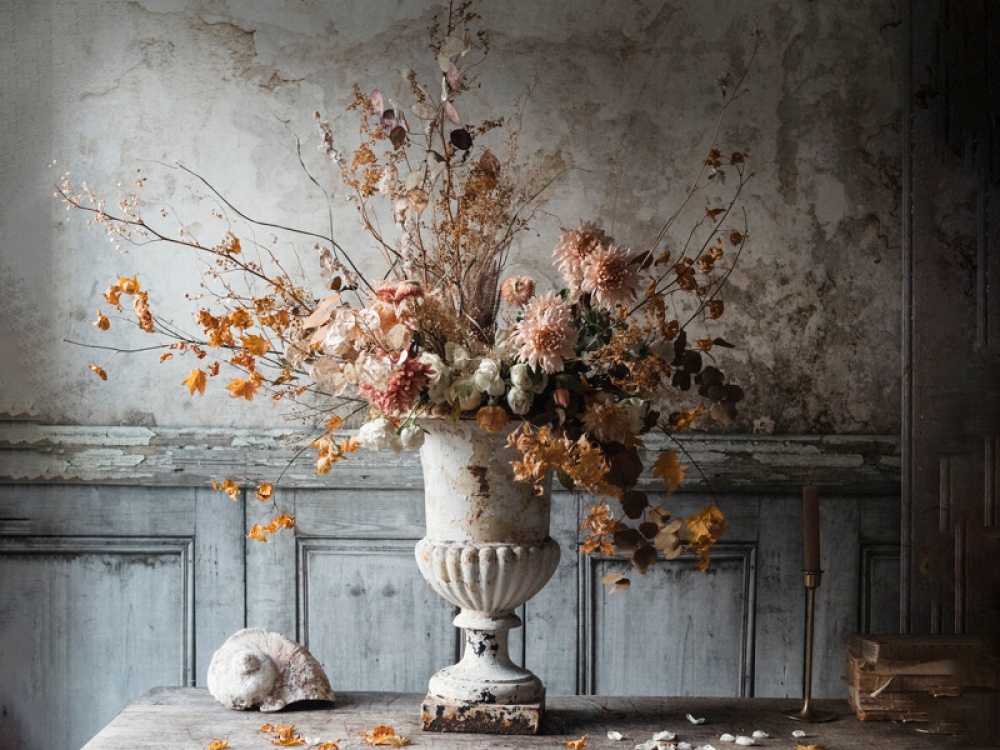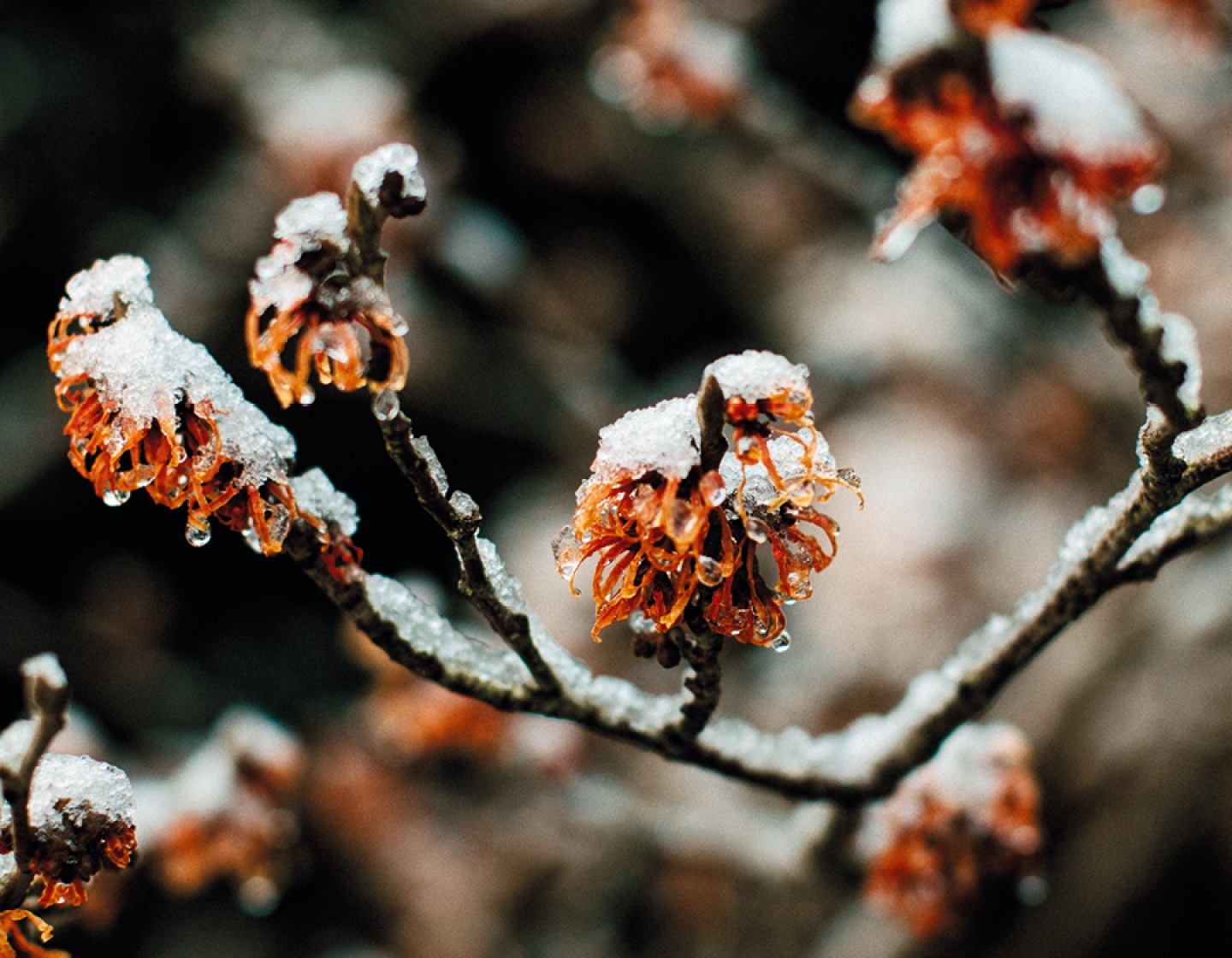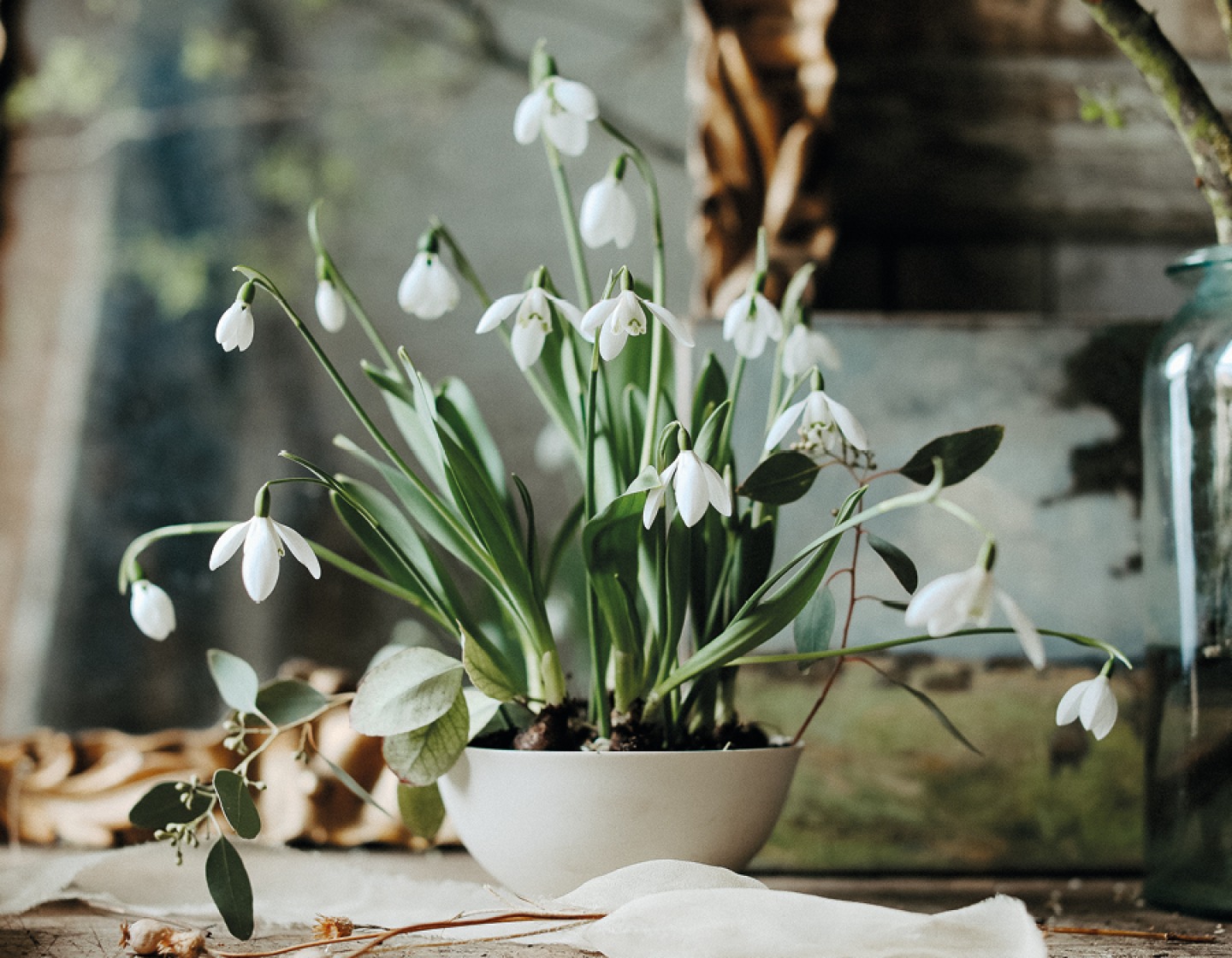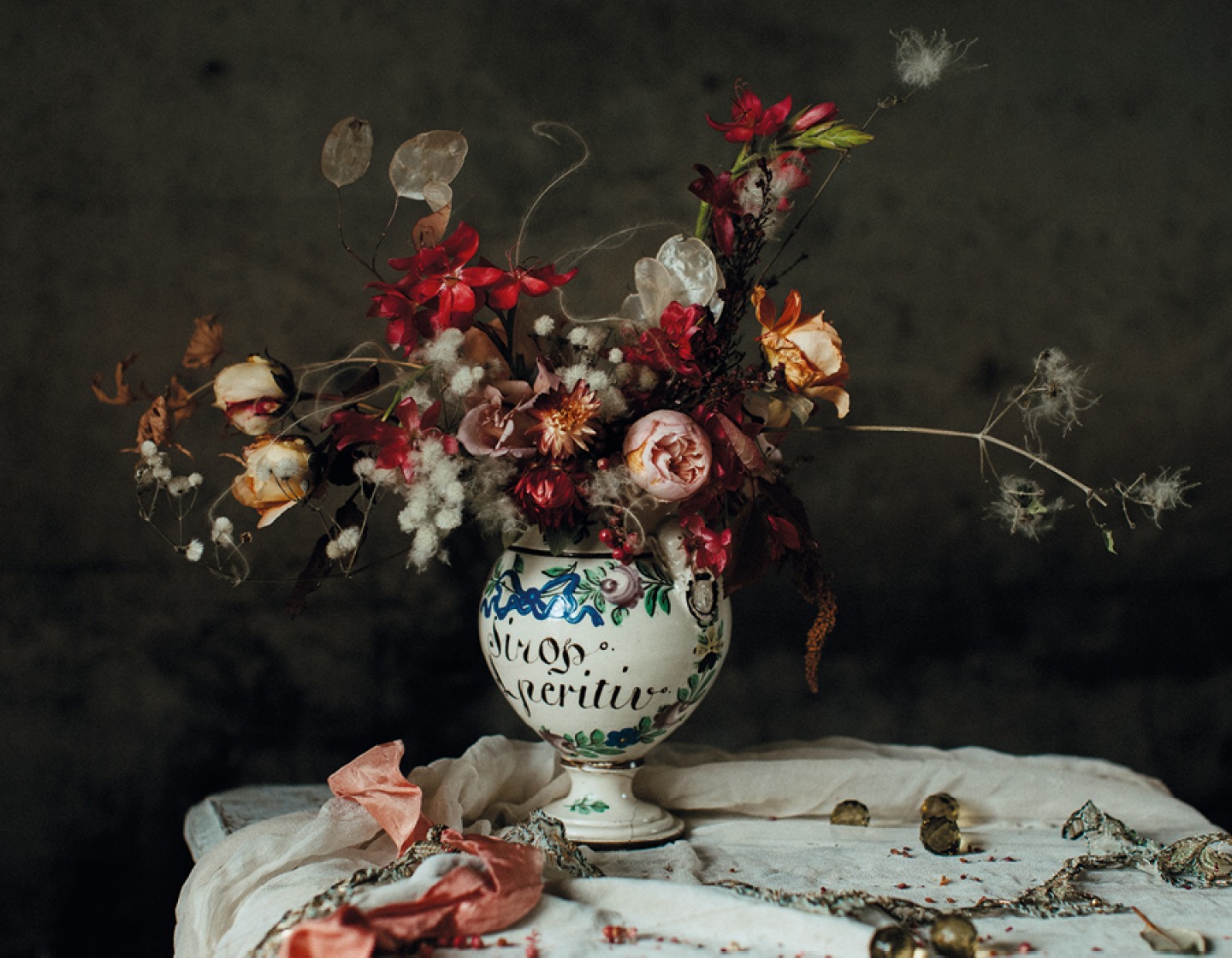
How to Arrange Seasonal Flowers

In The Flower Hunter, Lucy Hunter takes us on a journey through a year in her garden and studio
Connecting to the Landscape
The garden is carpeted beneath a thin dusting of snow and ice. Finally she sleeps, restoring her energy under the soil and quietly making plans for the longer days ahead. I follow her lead and accept that time spent indoors, curled up in an old armchair by the kitchen window, is time well spent.
The snow makes the garden look quite serene. No mud, no decay – just peaceful and utterly quiet, apart from the occasional bird chirp. I go out to feed the chicken and break the ice on her water, and notice the fragile but determined snowdrops pushing their way up through the grass under the trees.
It’s a small patch of snowdrops that I dug up from my grandmother’s garden many years ago and which makes itself slightly bigger every year. I occasionally add bulbs from friends’ gardens that are ‘in the green’ (snowdrops transplant far better if they are in the green rather than dry bulbs). A small bunch wrapped in newspaper is transported home, where I pot them up in a small bowl and enjoy the flowers inside for a week or so before planting them out in the garden for next year. Traditionally a sign of purity, snowdrops give me a renewed sense of optimism and remind me that nature carries on regardless of all the loud noise and general disagreement in the world.
The grasses and perennials have yet to be cut down in their beds, and the seed heads look like tiny jewels in the frost, each of them an exquisite sculpture made from ice. The rudbeckias in the cut-flower beds look as if they have had a wild night at a party and have just been caught dragging their sorry heads home.
And now I am going to take lessons from the cat, who lies in his basket next to the old armchair, fast asleep. Time to daydream is not time wasted. I take the opportunity to sit and stare for a while, considering the many possibilities that spring dangles like a carrot just over the horizon, and planning my planting dreams in the cutting garden.
'I don’t cut down seed heads in winter, leaving them intact to feed hungry birds, and so I can enjoy wonderful the ice and frost sculptures that form around them. Hydrangea arborescens flower heads have a fragile beauty, while the spidery blooms of Hamamelis x intermedia (witch hazel) look like tiny ribbons of wild silk and emit a warm, spicy scent, stopping you in your tracks on a snowy day. The orange tones echo the reddened stems of sedum.'



A Bowl of Snowdrops
Early in January, when the garden is predominantly mud brown, I bring some snowdrops inside. They prefer the cool, damp soil under the hedges and trees at the end of the garden, but for just a few weeks I dig up a few small clumps to plant in bowls and pots. I place them somewhere cool in the house and am careful not to let them dry out. Once they’ve finished flowering, they can go back into the garden. Snowdrops can also be cut to strike a delicate note in a small arrangement, but they don’t like the heat and won’t last long in water, so I find them better when they are left on the bulb.
'If you don’t have snowdrops in your garden, you can buy small pots from the garden centre in early January and re-pot them in a small bowl or dish of your choice. They last about as long as a bunch of supermarket flowers and will strike a delicate, wintry note in any room. Such arrangements make a charming bedside display in a guest bedroom or even the perfect present.'
The Garden
I find myself following the low winter sun around the house as the year slowly draws to a close. I resist the shortening days, challenging myself instead to focus on an increasingly limited palette of garden flowers that I’m determined to arrange and photograph in natural daylight.
My neighbour and friend Jenny, who has a walled garden, calls to say she has some kaffir lilies, or Schizostylis coccinea ‘Major’, in flower. They love the reliably wet Welsh winters, welldrained soil and her warm, sun-drenched walls, and have grown into huge drifts, like a wide red river running through the bed – such a treat at this time of year. Would I like some before she digs them up to divide them in spring? Barely giving myself enough time to say, ‘Yes please’, I whizz over to see them before it gets too dark and Jenny can change her mind. We agree to a trade of a few photographs from me for a cut bunch now and a clump of tubers to plant later on. Cradling my treasure, I hurry back to the studio to get them into water, then make a small arrangement in an old drug jar.
Whether I’m designing a small vase for the table or a large urn for an installation, I always choose a focal flower first, then base my filler flowers around it. In the height of summer, when the garden is full to bursting and the roses are in full bloom, I have almost too much choice, and often I end up with too many focal flowers (or opera divas, as I like to call them). They jostle for the limelight and the arrangement looks unsettled. But today the kaffir lilies have my undivided attention. Red isn’t a colour I use a lot during the rest of the year, and it can be difficult to photograph, but the flowers are crying out to be brought inside.
Deliberately keeping the rest of the palette limited, I snip a couple of roses that are just hanging on and haven’t been pruned yet, some dried heather and strawflower, and a few wisps of Clematis vitalba (old man’s beard). The jar has a narrow neck, so I push a small ball of chicken wire inside and fill it with water. I want to do justice to my diva, but I don’t want her to dominate. The wispy dried pieces make the arrangement feel lighter and catch the last of the light.
'Winter is a time for appreciating the small treasures in your garden. You don’t need a bucket of blooms to make a statement. My colour in this jar comes from the kaffir lilies, a few roses just clinging onto their petals, and a sprig of deep pink heather pushed down low. The rest is pulled together with the intriguing textures of pink pepperberry, Clematis vitalba (old man’s beard) and lunaria (honesty) seed heads.'











